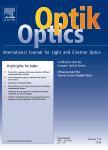版权所有:内蒙古大学图书馆 技术提供:维普资讯• 智图
内蒙古自治区呼和浩特市赛罕区大学西街235号 邮编: 010021

作者机构:Henan Univ Inst Image Proc & Pattern Recognit Kaifeng 475004 Peoples R China
出 版 物:《OPTIK》 (光学)
年 卷 期:2019年第178卷
页 面:1208-1217页
核心收录:
学科分类:070207[理学-光学] 07[理学] 08[工学] 0803[工学-光学工程] 0702[理学-物理学]
基 金:NSFC-Henan Talent Jointly Training Foundation of China [U1504621] National Natural Science Foundation of China Key Scientific Research Project of University in Henan Province of China [15A413009, 18A120001] Jiangsu Key Laboratory of Image and Video Understanding for Social Safety (Nanjing University of Science and Technology)
主 题:Locality constraint Feature weight Robust coding Linear coding Image recognition
摘 要:We propose a novel adaptive locality-constrained regularized robust coding (ALRRC) for image recognition by considering both the effects of the test sample s features and the local relationships between the test sample and the training samples in the linear coding procedure. By adaptively calculating out a feature weight matrix of a test sample, ALRRC measures the effects of the test sample s features in the linear coding procedure. Furthermore, ALRRC can obtain the weighted test sample by multiplying the test sample by the feature weight matrix, which has reduced the roles of the aberrant features as far as possible. Similarly, ALRRC can get the weighted training samples by multiplying the training samples by the feature weight matrix. Moreover, using the similarities between the weighted test sample and weighted training samples, ALRRC adaptively calculates out a locality-constrained matrix that can truly characterize the local relationships between the test sample and the training samples. Finally, by incorporating the feature weight matrix and locality-constrained matrix into the linear coding framework, ALRRC is inclined to select the true local training samples to represent the test sample. In addition, we also propose an iterative algorithm to solve the optimization problem of ALRRC. Experimental results on several image databases show that ALRRC is more effective and robust than state-of-the-art linear coding-based methods.